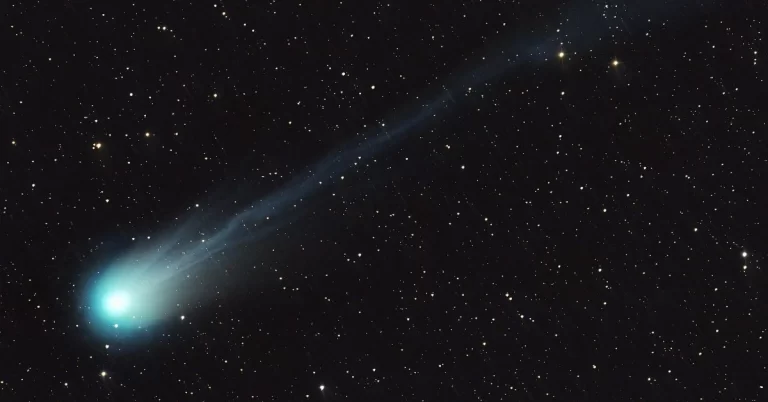Rare alignment of 7 planets to grace the sky on February 28, 2025
A rare celestial event will take place on Friday, February 28, 2025, when seven planets, Mercury, Venus, Mars, Jupiter, Saturn, Uranus, and Neptune will align in the evening sky.

A rare celestial event will take place on Friday, February 28, 2025, when seven planets, Mercury, Venus, Mars, Jupiter, Saturn, Uranus, and Neptune will align in the evening sky.

On April 21, 2024, Comet 12P/Pons-Brooks, commonly referred to as the ‘Devil Comet,’ will reach its perihelion, the closest point to the Sun, at a distance of 0.785 astronomical units (117 million km / 73 million miles). This celestial event will allow the comet to be visible just after sunset within the Taurus constellation, marking its peak visibility period.

In a stellar event anticipated to occur between now and September 2024, the T Coronae Borealis (T CrB) star system, located 3 000 light-years away, is predicted to undergo a nova outburst, becoming visible to the unaided eye. This rare occurrence, last witnessed in 1946, will temporarily elevate the system’s brightness to match that of the North Star, offering a unique viewing opportunity.
A rare 'recurrent nova' event is visible to the unaided eye in the constellation of Ophiuchus this week. RS Ophiuchi (RS Oph) is a recurrent nova system, located about 5 000 light-years away from Earth, with a recurrence rate of about 15 – 20 years. Its…
Approaching Comet C/2020 F8 (SWAN) has become bright enough that it is already visible to the naked eye. As of 14:30 UTC on April 30, 2020, the comet is 115 million km (71 million miles) away from Earth, with a magnitude of 6.0. The comet appears like a bright fuzz…
Although Comet Atlas (C/2019 Y4) continues fading and fragmenting, newly-found comet C/2020 F8 (SWAN) has been found to be brightening firmly. Meanwhile, C/2017 T2 (PanSTARRS) is holding steady at 8th magnitude and a new Comet Atlas — C/2019 Y1 — discovered on…
The Virtual Telescope Project will bring us live views of the first Supermoon of the year on February 8, 2020, as it rises above the unique skyline of Rome. The online, free session will start at 16:00 UTC. Supermoon is a popular term indicating a Full Moon or a New…
The International Astronomical Union (IAU) has expressed its concern about light pollution posed by an increasing number of satellite constellations in low-Earth orbits (LEO), manly SpaceX's Starlink constellation launched May 23, 2019 – next-generation…
A new phenomenon seen as a giant purple streak of light in the night sky has been recently discovered and, for lack of a better word, named Steve. Steve was discovered thanks to scientists, citizen scientists, ground-based imagers and ESA's magnetic field Swarm…
Planet Jupiter is at opposition on April 7, 2017, meaning that the Sun, Earth and Jupiter will form a straight line. At around the same time that Jupiter passes opposition (21:28 UTC), it also makes its closest approach to the Earth in 2017. By midnight (local…